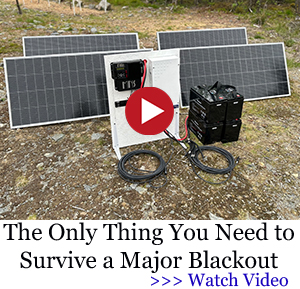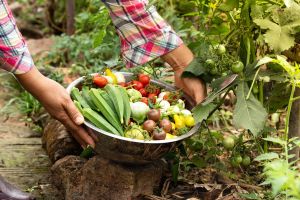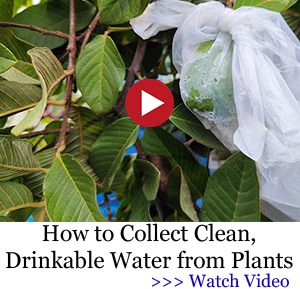Better Than a Bunker

![]()
If you have a rural property safe from prying eyes, bugging in during a crisis makes more sense than bugging out. The bigger debate in a situation like this is whether it’s better to bug in at a properly prepared homestead or hunker in a well-stocked bunker.
A bunker might seem like a perfectly prepared solution. Yet no matter how well you stock it, the resources will eventually dwindle, or there will be some sort of mechanical failure that forces you to come out. When you finally do emerge weeks or months later, it’s hard to find fresh resources and even harder to establish sustainable food and water systems from scratch.
With some proper planning and preparation, a fortified homestead can give you access to self-sufficient systems for food, water, and shelter. Not to mention the psychological effects and other less tangible benefits.
With this in mind, we thought we’d examine why bugging in at home can be better than a bunker. This includes looking at some important drawbacks of a bunker, and the benefits of a properly developed rural homestead.
 When it comes to bugging in at home rather than hunker in a bunker, you have to actively invest in developing your property over time. This includes creating sustainable food systems, electrical systems, and ways to create clean water.
When it comes to bugging in at home rather than hunker in a bunker, you have to actively invest in developing your property over time. This includes creating sustainable food systems, electrical systems, and ways to create clean water.
Related: 6 Bug In Mistakes That You’re Probably Making Right Now
Many of these pay dividends during normal times by helping reduce your overall cost of living. While maximizing your chances of surviving when you bug in during a crisis.
Maintaining a positive mindset is absolutely critical in any crisis, especially a prolonged one! Nothing helps maintain a positive mindset better than the comforts of home.
When you bug in at home rather than a bunker, you’re also more likely to spend time outside and be exposed to natural light. The psychological benefits of these simple things should not be underestimated.
 In a bunker, an electrical problem due to an external maintenance issue will likely force you out before you run out of food and water. When you bug in at home, it’s easier to maintain every aspect of your electrical system.
In a bunker, an electrical problem due to an external maintenance issue will likely force you out before you run out of food and water. When you bug in at home, it’s easier to maintain every aspect of your electrical system.
The oil gets changed in the generator on time. The muffled exhaust port is less likely to get clogged by a bird nest, and storm damage to a solar panel is easier to repair when you see them every day.
Batteries also tend to have finite lifespans. Especially lead-acid batteries. It’s easier to repair, refurbish, or replace a bad battery when you bug in at home, and you know the lay of the land.
When you develop sustainable systems at your property over the course of a few years, it rarely draws unwanted attention. No one bats an eye when you order day-old chicks through the mail. You don’t need a county permit to expand your garden or plant fruit trees. Installing solar panels might even get you a tax credit.
During normal times, outsiders just see you as a family making some minor improvements to their rural property.
When you bug in at home, it’s much easier to maintain a sustainable food system. This includes a big garden, perhaps some simple livestock, along with fruit and nut trees.
The best food sustainability picture for your setup will depend on your property, access to water, and the number of people you need to feed
 A self-sustainable garden needs at least 200 square feet of productive soil per person.
A self-sustainable garden needs at least 200 square feet of productive soil per person.
You can then plant it with vegetables that are easy to pickle, can, or put up for long-term storage in a root cellar. This includes things like: asparagus, potatoes, carrots, beets, onions, beans, peas, and squash.
If you want to be self-sufficient, you can learn here the best way to grow a year-round self-sustaining garden that will keep you and your family well feed during a crisis.
Clean water is essential for surviving a crisis, and even a bunker with an expensive water reclamation system still needs maintenance. When you bug in at home, a small-scale water purification system is much easier to maintain.
Depending on the property, you might drive an additional sand point well when you need access to another source of groundwater. There might also be nearby natural sources of water you can harvest for purification.
Keeping chickens will take your chances of successfully bugging in at home to the next level. A dozen laying hens will provide all the eggs a family of four needs, and if you feed them this plant, they will lay twice as many eggs. But they can survive just fine on kitchen scraps, bugs they forage, and a little bit of waste grain.
Their manure can be composted to create a potent fertilizer for the garden. You can even put them in portable coops in the garden to help keep the weed and insect population at bay.
Dogs and bunkers go together about as well as mustard and ice cream. When you bug-in at home you can keep your family dog living at your side. This alone will go a long way toward helping maintain a positive mindset and keeping your kids comfortable.
Depending on the type of dog you have, they can also be a great boon to your survival and security efforts. There are a lot of reasons why our ancient ancestors kept dogs living at our sides for tens of thousands of years. You’ll come to appreciate those benefits even more in an extended crisis.
Outside of a few cataclysmic scenarios, most of the time you’re better off weathering a crisis by bugging in or sheltering in place, rather than hiding in a bunker. Success with this strategy starts with preparing your food sustainability systems during normal times.
You may also like:
 Deadly Mistakes People Made During the Great Depression
Deadly Mistakes People Made During the Great Depression
Cheap and Easy Way to Build a Root Cellar in Your Backyard (Video)
How to Cool Your Home When the Power Goes Out
The Most Realistic Prepper TV Series You Need to Watch
